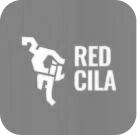Analysis of comma data to identify narratives about blockchain developments with positive social impact
The cryptoasset industry and theblockchain industry is at the center of a social debate that is increasing or decreasing in volume depending on the current state of the industry. The conversation around their technological innovations and the potential economic and social revolution they entail has always taken place in dialectical termswith a high degree of opposition between the perspectives covered and the representation of the sector itself, which has ended up leaving a series of clichés to which society in general has assumed to approach a tremendously complex phenomenon with few options to be understood by the majority and in its entirety.
The media, blogs and social networks have been no exception; moreover, they have contributed to the polarised messages about this industry grow exponentially. They have amplified some positions against others and have magnified certain Manichean clichés inherent to the division between good and bad, which in this case have ended up installing a dichotomous climate around blockchain and cryptos.. It can be summarised in two main aspects: technological revolution (favourable public opinion) versus speculative bubble (unfavourable public opinion);
Industry reputation is holding back the adoption curve
All of the above has had an impact on the adoption curve (or Rogers curve) of these new technologies, and has had an overwhelming influence on the socio-cultural factors that influence the successful implementation of a given innovation. The sector has not succeeded in consolidating the Early Majority, which has prevented the leap into the Late Majority. Moreover, there has been a phenomenon in which skeptics have actively opposed this adoption,backed by institutional voices, monetary authorities and investment gurus such as Warren Buffet, Charlie Munger or Jamie Dimon, etc. who have set the rules of the narrative around cryptos and have established a set of beliefs that the rest have followed: they are a scam, they are worthless, it is the Wild West, etc.
Industry developments in 2022: the ecosystem decline Terra and the crisis in the crypto-lenders – and the bankruptcy of the crypto-asset platform FTX, have served as a justification for these positions and narratives, and have caused a reputational crisis, amplified by the treatment of non-specialist media; The result is a communication gap between one and the other that the sector has perceived and regretted that, with notable exceptions, the kind of media coverage it receives is carried out without knowledge of how it really works. And that the media have not had the tools to reduce;
The report ‘The cryptoasset sector and blockchain. An analysis of media coverage and the digital conversation’
For its mission as a strategic financial communications consultant to many of the firms that have participated in this industry, comma has observed these trends, has perceived the polarisation, increasingly palpableand the sector’s difficulties in addressing a public opinion that has distanced itself from the phenomenon;
For this reason, it has carried out an extensive and comprehensive analysis of the digital conversation generated in 2022 around the news spread about the blockchain industry and digital assets; comma has studied, through an ‘Analysis of news and media content’ and an ‘Analysis of digital narratives and media territories’ what the media say, how they say it, what narratives emerge from media coverage and how these themes of the digital asset industry are related. If that wasn’t enough, it has gone a step further to identify what climate of opinion each of these narratives generates and their impact on the reputation of the sector.
The result is set out in the report ‘The crypto-assets sector and the blockchain; An analysis of media coverage and digital conversation‘ which analyses the above-mentioned gap, its nature and where in the social dialogue it is larger or smaller and therefore has the potential to be closed. More importantly, how this gap with the media establishes a stigma towards the sector and a climate of mistrust in society; In addition, it has a mission to equip the industry with tools to cultivate your relationships with the media, in the interest of driving those narratives about blockchain developments that will generate positive impact and shore up the industry’s reputation.
A two-phase analysis
The first of the analyses (news and media content) examines in a qualitative and expository way the digital conversation that took place throughout 2022 around the cryptoasset and blockchain industry, according to the links that had the most diffusion and impact on social media networks and divided into five categories: crypto ecosystem, generalists, financials, business and technology and on the basis of identified thematic axes. A discursive analysis is also carried out in order to identify the potential impact on the population of the media content disseminated on social networks.
The second analysis (digital narratives and media territories)delves into the narratives or debates that emerge from the dissemination of the news previously analysed; Using graph analysis (SNA), it detects social media posts that include URLs to previously detected crypto sector news; To identify which type of conversation – narrative trends – is associated with which type of content;
News and publications on Social Media in 2022 in figures

Seven keys to media coverage in 2022
On the basis of the two analyses described above, we have found that seven trends in news reporting on crypto-assets and blockchain:
- Distinguimos three main narrative blocks: ‘BTC’, ‘Investment’ and ‘Industry’.which evolve throughout the year;
- The news with a negative impact tends to become more viral,but when it comes to the conversation on RRSS about industry news, there tends to be a more positive sentiment.
- Some issues appear to be oversized in terms of impact – the more generalist ones- They generate greater reach and dissemination, which in turn leads to a feedback loop; Although they fail to establish themselves as trends within the sectoral debate, they do make an impression on the general public: they are a constant trickle of information that contribute to a negative climate..
- In contrast, the more specialised narratives, from sectoral media, generate more debate and yet, are less viralised and have less impact on the general public.
- There is a segmentation of media coverage -where each media outlet talks exclusively about certain topics- with little permeability between them. What causes the emergence of opinion bubbles.
- As a result, there is a polarisation throughout the year in the selection of the news and its treatment. It leads to an over-dimensioning of potentially critical issues for the sector’s reputation and an under-representation of diverse issues around the industry;
- Also, a number of bridging narratives are identified in 2022with the potential to grow by 2023. Those associated with more cross-cutting coverage, which appear throughout the year in debates of various kinds, and therefore have a lower rate of isolation within the conversation;
Recommendations;
As discussed above, this has led to a polarised situation, which usually has two reactions from the subject group; On the one hand, radicalisation, activism and evangelism; on the other, to distance ourselves from the polarised debate and continue to construct parallel narrativesso as not to be relegated to this dichotomy, albeit at the risk of remaining isolated.
Thus, comma makes a series of recommendations, always taking into account our analysis.
For the sector:
- Transcending the combative and victimising stanceto strengthen the constructive and unified voice of the sector;
- Moving away from generalist and polarised narratives without losing sight of the goal of expanding the audience to connect with the wider public;
- Intensifying industry outreach work, with narratives capable of entering the minds and debates of the general public, using planned and professional communication strategies;
- Fostering bridging narratives, giving more weight to those that present less potential reputational risk to the sector, encouraging moderate and objective voices;
- Diminish the gap between the media and the sector, incorporating expert, academic, professional and independent voices that are able to find ways to convey the multiple contributions to society.
For the media:
- They are required more hinge or bridge media with sufficient relevance to encourage more transversal media coverage, and which make information more accessible to wider audiences, with a language that breaks away from the specialisation of sectoral media.
- A greater effort by the less specialised media to listen to the crypto industry.by expanding its sources;
- Provide journalists with training, professional conferences and meetings with the sector so that they can deepen their information.
- Appreciate the emergence of new worlds around industry and different technological developments, as they present an informative opportunity; The key to this is that journalism must be open to new specialisations, new narratives and new subjects;
From analysis to action
The way to dilute the discursive polarisation of the blockchain and digital asset industry reflected in this in-depth analysis is for all players to become aware of the situation – with objective data and not merely by intuition – and to start acting accordingly;
This exercise will undoubtedly require a change of attitude. It is a matter of abandoning some of the defensive, victimising or arrogant positions detected in the analysis in order to begin to create – under the umbrella of a coherent, planned and unified communication strategy – bridges that facilitate the disappearance of echo chambers and biases; The ecosystem has the challenge and opportunity to find our authentic voiceto, from there, participate in the professional outreach of society, correct misinterpretations and create a unique narrative.
We see a clear opportunity for private and public entities, associations and industry professionals to radically change a proactive, professional and conscious communication model. It is about pooling our knowledge, experience and projects to win because communication is power:
- To be able to share this reality in a clear and non-technical way, with depth and expertise;
- To be able to showcase new developments and applications in the real world;
- Power to put expert, academic and professional voices at the service of the mainstream media;
- Power to collaborate in the development of an active lobbying policy, multi-brand communication and public relations campaigns or the consolidation of an active meeting place for the industry;
In order to start acting and go beyond intentions, we present the NFT ‘comma, blockchain and digital assets’; With this NFT, created in partnership with PriorityGateas a technology partner; we take the first step and materialise our commitment to create a community capable of working in a coordinated and united way to overcome the obstacles that the analysis has shown us and start transforming the narratives of the industry from within; The bearers of this NFT will be members of this community that aims, in the medium and long term, to consolidate this philosophy of co-creation of a new narrative reality around digital assets;






